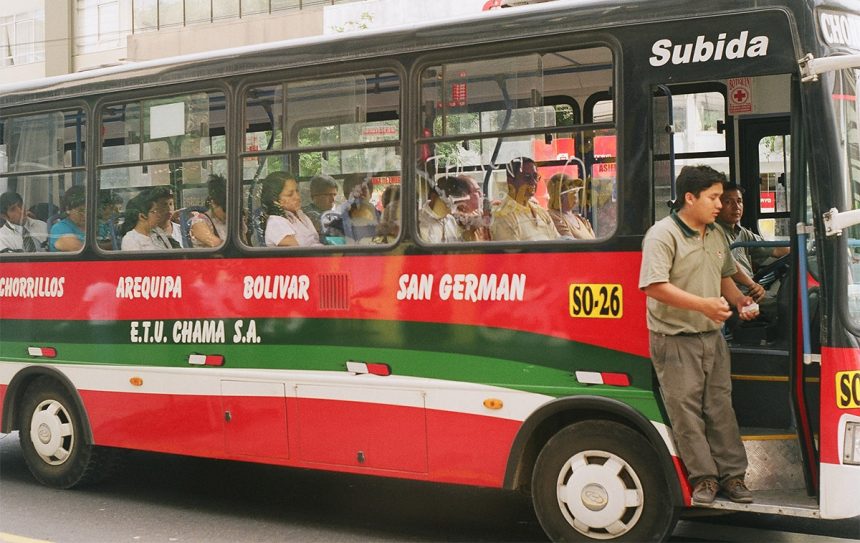Public transport in Peru is, at least numerically, incredibly well developed (that is to say there are a lot of buses). Sometimes it seems that there are even more buses and taxis on the road than private cars. Quality, however, is a different question entirely. Older models of cars and buses are more prevalent newer ones. But there is something about Peruvian transport, buses in particular, that sets it apart from its neighboring countries.
Buses have a team operating them. As a rule, a minimum three people are needed: the driver, someone to collect fares (El Cobrador) and at least one passenger: because Peruvian buses don’t move if no one is on board. The role of el cobrador (literally: “the one who charges”) is the most interesting. Drivers and passengers all across the world are the same; the former drives and the latter sits. But el cobrador is a unique and curious character in Peru.
What exactly does El Cobrador do?
So you’re standing at a bus stop, waiting for a bus. A bus approaches: already, before the thing has stopped, el cobrador is hanging out the door or even jumps out onto the pavement. They then start reeling off the names of all the places the bus is going, trying to coax passengers onto their particular bus. The bus stop might have as many as three or four buses pulled up, with as many cobradors all shouting and trying to get people on board. Some of them even ply the pedestrian crossings for potential customers. While they’re standing there yelling, they’re also collecting bus fares and shelling out change to disembarking passengers.
When el cobrador and the bus driver are satisfied that they can’t get any more passengers from a particular bus stop, or if the bus driver is in a hurry, maybe to race ahead of the other buses and beat them to the next stop, el cobrador hops back aboard and closes the door. Now they might do a round of fare collection, if the aisle is free of people. They call out the name of the next stop, and wait to see if any of the passengers call out: “baja!” (down!) or “baja atras!” (down, at the back door). The bus pulls up at the next stop, and they’re out again, yelling themselves hoarse trying to attract passengers. So it goes, up and down the length of Cusco, all day, every day. It can be a tiring job with little reward, but for many Peruvians it’s a solid job to help them put food on the table.
Testing Peruvian public transport
For those of you who are planning a trip to Peru, I recommend that you take public transport at least once. Then you will have a great opportunity to check and see how tough a job this is for el cobrador, and of course you will taste some of the everyday life of Peruvians. Public transportation is the perfect place to get an extra knowledge and be better acquainted with Peruvian culture. And if you are a talkative person, you will surely find some interesting chat with other customers :-). Take it as a great opportunity to learn as much as possible about culture, traditions and daily life of Peruvians. Then you will have two in one – a cheap way of getting from point A to point B; and the knowledge of the country, people and culture at first hand.

